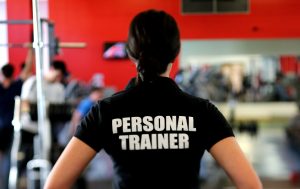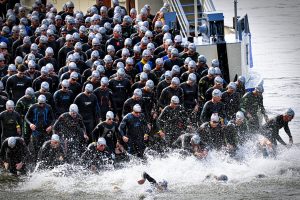Starting a Training Plan for a First Triathlon
Embarking on your first triathlon journey is both exciting and challenging! Whether you’re starting from scratch or coming from a background in one of the triathlon disciplines, a well-structured training plan can make all the difference. This post will walk you through how to set up a balanced training schedule, find the right intensity, and stay motivated (disciplined) as you work toward your triathlon goals.
Why Having a Training Plan Matters
A training plan is more than just a schedule; it’s your roadmap. It ensures that you’re making progress without overdoing it, balancing the three triathlon disciplines (swim, bike, run), and gradually but consistently building your endurance and strength. This helps reduce the risk of burnout or injury, making your journey to the finish line smoother and more enjoyable. A plan provides consistency, which is crucial for progress, and helps you stay focused and accountable along the way.
1. Setting Clear, Achievable Goals
Before diving into a training plan, start by defining your goals. Having a clear vision will guide your plan’s structure and help you measure your progress. Some useful questions to ask yourself:
- Are you aiming simply to finish the race, or do you have a time goal in mind?
- What’s your current fitness level, and do you have any previous experience with swimming, cycling, or running?
- How much time per week can you realistically dedicate to training?
Example Goal: “Complete my first Sprint Triathlon in 12 weeks without injury, building gradually to a consistent 2-3 hours of training per week.”
This goal is specific, measurable, and allows for gradual progression.
2. Choosing the Right Triathlon Distance
The type of triathlon you’re aiming for will shape your training approach. Generally, beginners often start with:
- Super Sprint (shortest, typically 400m swim, 10km bike, 2.5km run)
- Sprint (750m swim, 20km bike, 5km run)
- Olympic (1.5km swim, 40km bike, 10km run)
For a first triathlon, a Sprint distance is often a great choice because it’s achievable with a moderate training commitment and allows you to experience all three sports without overwhelming distance requirements. Check out our Types of Triathlon page for more detail on different race distances.
3. Setting Up a Weekly Training Schedule
A balanced weekly schedule is the foundation of a successful training plan. Here’s a sample of a 12-week Sprint Triathlon training outline. Remember to adjust according to your fitness level and experience.
Sample Weekly Schedule:
- Swim: 1–2 times a week (building from 20 to 30 minutes)
- Bike: 1–2 times a week (starting at 20 minutes, progressing to 40)
- Run: 1–2 times a week (starting with 10–15 minutes, increasing to 30)
- Brick Workout (Bike + Run): Every other week to start, then weekly in later stages
Each week should include:
- Three Key Workouts: One for each discipline
- One Rest Day: Critical for recovery and avoiding overuse injuries
- One or Two Cross-Training or Strength Days: Optional and often ignored, but incredibly beneficial, such as strength training or yoga for mobility. Check out our Strength Training page for more detail.
4. The Three Phases of Training
Breaking down your training into phases helps manage the progression and intensity. Here’s how it looks:
- Phase 1: Base Building (Weeks 1-4): Focus on building an aerobic base with low-intensity, consistent workouts. Gradually increase the time spent in each discipline, focusing on form, especially in swimming.
- Phase 2: Build (Weeks 5-8): Begin incorporating interval sessions or moderate-intensity efforts, especially in cycling and running. Start to work on transitions between disciplines, like bike-to-run (called a “brick” workout), to prepare for race-day transitions and to get the body used to changing discipline.
- Phase 3: Peak and Taper (Weeks 9-12): As you near race day, focus on race-specific training. This might include practicing at the actual race distances. In the last week, taper off the training to allow your body to rest and recover for race day.
Our page on Advanced Training contains a much more in-depth understanding of these phases.
5. Training for Each Discipline
Each triathlon discipline has unique training needs. Here’s an overview of each:
Swimming Swimming can be challenging for many beginners, as it demands both technique and stamina. Focus on:
- Breathing: Consistent breathing patterns can help reduce fatigue.
- Technique: Focus on efficient strokes rather than speed. Consider taking a lesson to refine your form.
- Open Water Practice: If your race will be in open water, practice swimming in lakes or oceans to get used to it.
Check out our Swimming Tips page for detail.
Cycling Cycling is the longest segment of a triathlon, so endurance is key. For a beginner:
- Start Indoors or on Safe Routes: If you’re new to cycling, indoor cycling or quiet roads can help you build confidence.
- Work on Cadence: Aim for a comfortable cadence (70–90 RPM), adjusting as needed.
- Practice with Equipment: Use the bike you’ll race on to get familiar with its handling and setup.
Check out our Cycling Tips page for detail.
Running Running after cycling can feel different, so incorporate “brick” workouts (bike-to-run transitions) into your training. Tips for new triathletes:
- Start with Short Runs: Ease into running distances, especially if you’re new to it.
- Work on Stride and Cadence: Keep a consistent, light stride. Building cadence over time will help with post-bike runs.
- Transition Practice: Practice running after cycling to get used to the feeling.
Check out our Running Tips page for detail.
6. Incorporating Brick Workouts
A “brick” workout involves combining two disciplines in one session, usually cycling followed by running. Brick workouts help your body get used to the unique physical demands of transitioning from one discipline to another. Aim to start these every other week, progressing to weekly in your final month. Example workout: a 20-minute bike ride, immediately followed by a 10-minute run.
7. Tracking Your Progress
Tracking helps you stay motivated and adjust your plan as needed. Consider using:
- Training Apps: Platforms like Strava or TrainingPeaks allow you to log workouts, track progress, and analyse your performance.
- A Training Journal: Note how you feel after each workout, any pain points, or insights gained.
- Regular Assessments: Every 4–6 weeks, test yourself on a short triathlon or time trial to see your progress.
Our post on Tech discusses both apps and wearables to help plan, measure, and track your progress & performance.
8. Listening to Your Body
As with any endurance training, listen to your body. Signs like persistent fatigue, joint pain, or recurring soreness are indicators to dial back and take extra rest. Rest and recovery are just as important as training, and sometimes a light stretch, yoga session, or rest day can make a world of difference in preventing injuries. We cover this in detail in our Recovery post.
9. Fueling Your Training
Proper nutrition is essential for energy and recovery. Aim for balanced meals with carbohydrates, proteins, and fats, and focus on hydration. During longer workouts, try:
- Electrolyte Drinks to replenish salts lost through sweat.
- Snacks or Gels during longer bike or run sessions for sustained energy.
For a more in-depth look at fueling, check out our Triathlon Nutrition Guide.
10. Getting Mentally Prepared
Mental preparation is as important as physical training. Triathlons are as much about mental resilience as physical endurance, so consider practicing these strategies:
- Visualization: Imagine yourself successfully completing each part of the triathlon.
- Positive Self-Talk: Replace any negative self-talk with positive affirmations.
- Managing Race-Day Nerves: Practice in settings that mimic race conditions (like group swims) to get used to the excitement of race day.
11. Practice Your Transitions
Transitions can make a big difference in your race time, so practice moving smoothly from swim to bike (T1) and bike to run (T2). Tips for efficient transitions:
- Set Up Your Gear Carefully: Place items in the order you’ll need them.
- Practice Changing Quickly: Time yourself during training to get faster.
- Stay Calm: Focus on staying calm and avoiding unnecessary rush.
12. Race Day Tips
On race day, stick to your training, pace yourself, and stay hydrated. Some practical tips:
- Get There Early: Familiarize yourself with the course, set up your transition area, and relax.
- Stick to Your Nutrition Plan: Avoid experimenting with any new foods or drinks on race day.
- Stay Positive: Embrace the experience, take in the atmosphere, and enjoy the journey!
Check out our Race Day post for help on how to ensure the day goes to plan.
Starting Your Journey to Success
Training for your first triathlon is an exciting journey that will challenge you in new ways and build your confidence. At TriReady, we’re here to support you with guides, insights, and resources. Remember to celebrate every milestone, connect with other triathletes, and most importantly, enjoy the process. Good luck, and welcome to the world of triathlon!



